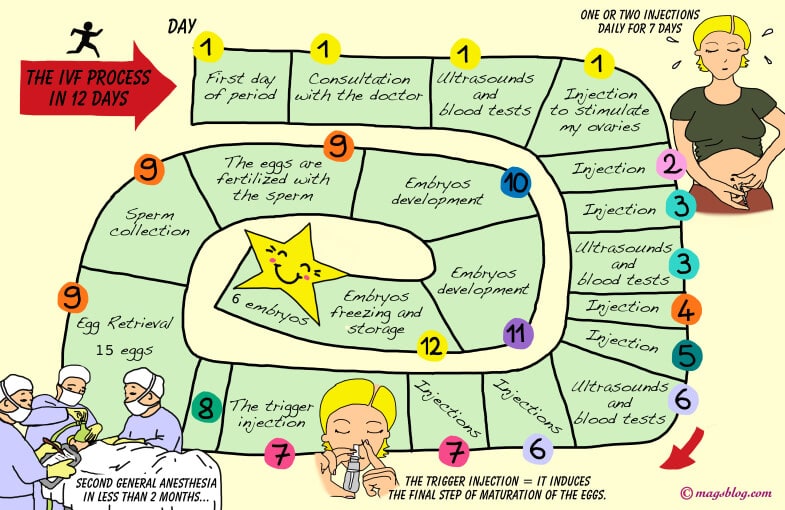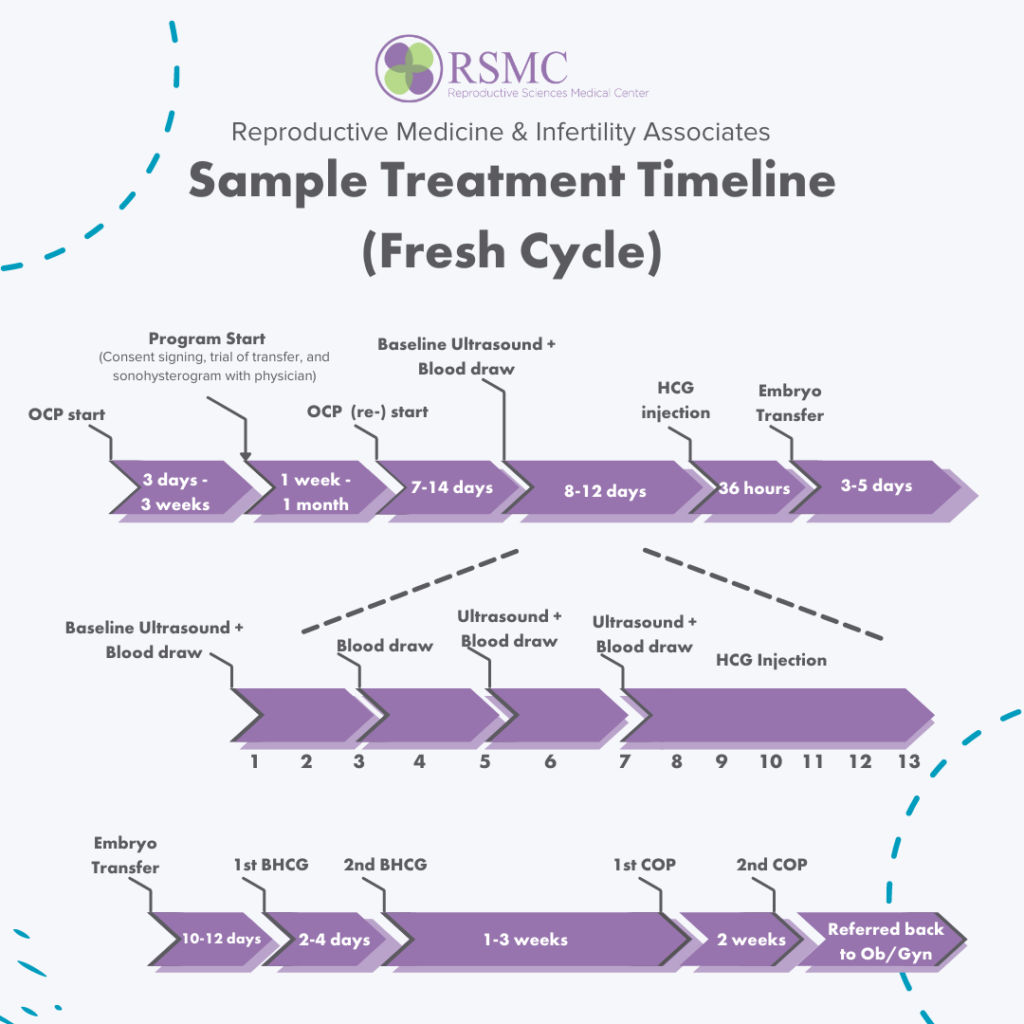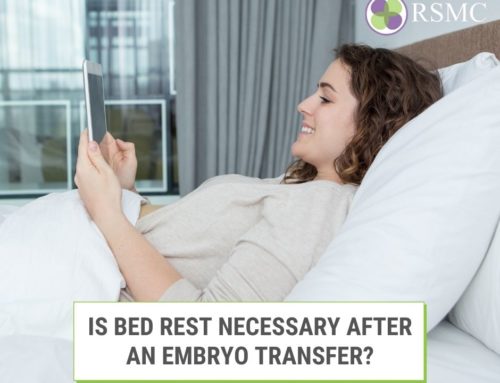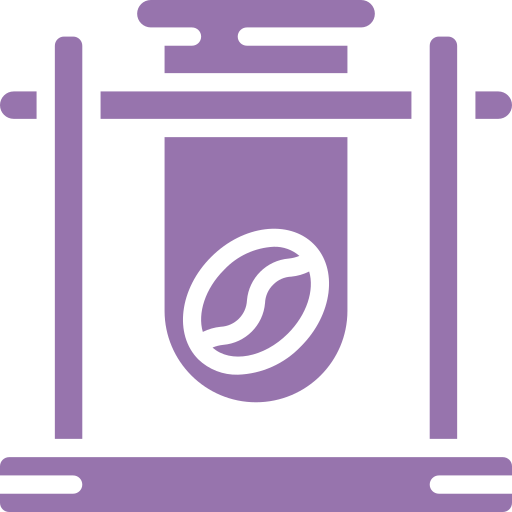IVF Process Timeline
The timeline of IVF process can prolong to anywhere between four to six weeks. Many women spend the first three weeks of the cycle taking birth control pills. The pills regulate her hormones and synchronize her period. This in turn ensures proper timing of the drugs she’ll be taking. After determining her protocol and treatment plan, the medical professionals at her IVF center will provide a detailed calendar and drug sheet for her to follow. The following is a timeline for a conventional IVF cycle.
Suppression and Developing Eggs
-
IVF Cycle Timeline: The First Phase
The first part of the process starts on the day the woman starts her period. During the first phase of the IVF cycle timeline, the woman takes birth control pills. It regulates hormones and synchronizes the timing of the other drugs.
-
IVF Cycle Timeline: Stimulation Medication
On day 21 of her menstrual cycle, she also starts taking Lupron, the stimulation medication, for 10 days. Lupron acts on the part of your brain (pituitary gland) that stimulates the ovary but also suppress the ovary from ovulating. This way, the ovaries ripen multiple follicles, instead of the single one during the natural cycle.
-
IVF Cycle Timeline: Suppression Check
After 10 days of Lupron, a suppression check takes place to make sure of the ovulation suppression.
-
IVF Cycle Timeline: Monitoring During Stimulation Period
At this point, the woman starts to take ovary stimulation medication. The most common injectable meds are Follistim, Menopur, Gonal-F, Bravelle, and Repronex. During this part of the IVF process timeline, the woman will still be taking Lupron for effectiveness of the pregnancy. However, the doses will become lower gradually. The stimulation period last 8-12 days.
-
IVF Cycle Timeline: Follicle Maturation and Harvesting
During the stimulation period the woman will undergo frequent ultrasound and blood tests. These tests are to determine when the biggest follicles get to 18-22 millimeters in diameter. This is the ideal size for the follicles. When they get to this size, they are mature and ready for harvesting.
Ready for the Egg Retrieval
Exactly 36 hours before the planned egg retrieval the woman receives an injection of human chorionic gonadotropin (HCG) to stimulate the eggs’ release from the walls of the follicles. This is called the trigger shot and the timing of this shot is critical. The eggs will release 40 hours after taking the shot. So it is important to harvest them before they leave the ovary. If the timing of the shot is too early the eggs could already be in the fallopian tube. Then it would be impossible to harvest.
Egg Retrieval
The egg retrieval part of the IVF process timeline is a minor outpatient surgical procedure. It usually takes around 30 minutes. Because the timing of the procedure is so critical, this procedure schedule takes place before the HCG shot. This ensures proper synchronization. If the used sperm is from the woman’s partner then he usually donates it on the day of the egg retrieval. After the eggs retrieval, they are taken to the lab. Here the experts will grade and test the eggs. The fertility center does so to know how many viable eggs they are working with.
The Importance Of Trigger Shot In Egg Retrieval
With IVF, the trigger shot is used before egg retrieval to help facilitate a process called meiosis. In meiosis, eggs go through an important division where its chromosomes go from 46 to 23, priming them for fertilization.
Whereas other gonadotropins — like follicle-stimulating hormone (FSH) and LH — work on both growing and maturing the eggs, a trigger shot of hCG helps the ovaries release those mature eggs as part of ovulation.
Fertilization Process for IVF
Shortly after retrieving and grading the eggs, or thawing the frozen eggs, fertilization takes place. In about half of IVF cycles the egg fertilization occurs by putting them in a dish of sperm. In rest of the process cycles the egg fertilization occurs using the Intracytoplasmic sperm injection (ICSI) procedure. Here a single sperm is injected directly into the egg. This procedure is especially useful when there are problems with the sperm because it requires only one healthy sperm.
Developing the Embryos
After creating the embryos, they are further developed in the lab for 3-6 days.
- First 3 days: The embryos grow in a culture media. The design of the media mimics the fluid in the fallopian tubes. Then the embryos go into different culture media, which mimic the uterine environment.
- Day 4-6: The lab offers extended embryo culture to grow them to the blastocyst stage.
- Transferring blastocyst stage embryos: It offers several advantages over the day 2–3 transfer embryos – day 3 embryos should have already started dividing, but only have 6–8 cells. The blastocyst stage (day 5–6) has 80–120 cells. By seeing the difference in the quality of embryos the doctors can transfer the strongest and ensure the best possible outcome.
Another advantage of blastocyst stage embryos is that Pre-implantation Genetic Diagnosis (PGD) is possible. This test is similar to the screening run during the pregnancy, a genetic screening to rule out some genetic disorder.
Preparing the Uterine Lining
The day after the eggs retrieval, the woman starts daily injections of progesterone. This is to enrich the uterine lining and prepare it for incoming embryos processed for IVF Process. This supplementation continues for the first 2-3 weeks after the embryo transfer.
Transferring Embryo(s)
The embryo transfer procedure very similar to Intrauterine insemination (IUI). The procedure takes place in a doctor’s office. It lasts about 15–20 minutes and doesn’t require anesthesia. The doctor will insert a very small, thin and flexible catheter through the cervix. The embryo(s) that are going to be implanted are delivered directly into the uterus where they attach. After the procedure, the woman rest for at least 30 minutes then is free to go home.
Taking the Pregnancy Test
Usually, 11–14 days after the transfer date, the woman takes a pregnancy test. It is generally a blood test since they’re more accurate. That’s the IVF process timeline from start to finish but it isn’t really the finish of anything. What it means is the start of a lifetime full of the joys of parenthood.
The IVF timeline treatment cost of $20,000 per conventional cycle it makes sense to be aware of the IVF timeline. It’s important to schedule IVF procedures during a time when the woman will be available for the appointments and have someone to drive her to the egg retrieval. 4-6 weeks of appointments is a small price to pay for the opportunity to have a family of your own.
























